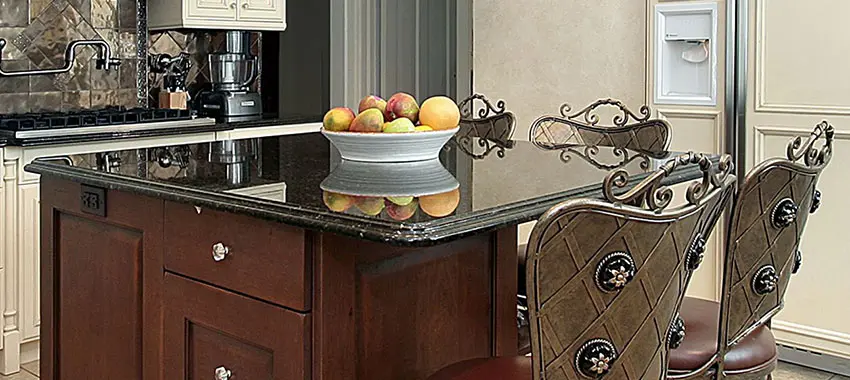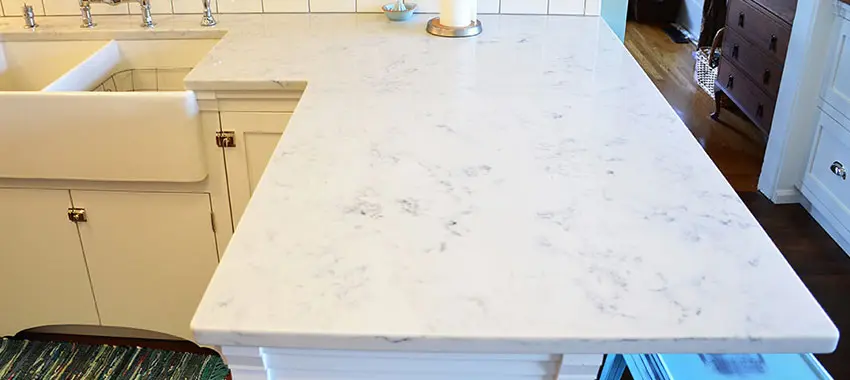Jan
How To Choose A Backsplash That Matches Granite Countertops?
- 2025
- FlintStoneTops
Backsplashes are a hit or miss among people. Some people love them because they add that completed look to the space and some just think that they’re too much work. Well, here is what you need to do if you love backsplashes and want to pair them with granite countertops.
Picking The Right Backsplash With Granite Countertops
Choosing The Right Color
First, you need to understand that the color of the backsplash and the countertops should match. This doesn’t mean that you have to go for the same material or color when it comes to both countertops and backsplash, but you need to see which backsplash color complements your granite slabs the best.
There are a lot of colors to choose from, and sometimes it can be overwhelming to decide the color of backsplash you want to go for. So, if you can, try to look at your kitchen as a whole and figure out what looks best. If you think your kitchen has a more neutral vibe, then embrace it and make it the center of attention. That is how you can choose a perfect combination.
If you want to add that dark edge to your kitchen, you can even go for darker-colored backsplashes if that is what you prefer. There are lots of options out there and you shouldn’t get confused because it’s all your decision in the end.
Patterns Are A No-Go
Granite is already heavy on the patterns and textures, so it will only look overpowering if you add more patterns with a backsplash. What you want to do instead is choose a backsplash color and material that is just a a solid one with little to no patterns.
You may think that it won’t look good, but you’ll have to trust the process and see the results for yourself. The muted backsplash tile will add a lot of dimension to the very loud granite and it won’t look out of whack. So, the next time you want to select a backsplash, try something with minimal or no patterns.
Don’t Extend The Countertop
This is something that a lot of people end up doing, especially if they don’t have any idea about choosing the right backsplash for their granite countertops. They tend to extend the actual countertops by 4 to 5 inches in a strip and even though it’s alright, that trend is just not there anymore.
You need to think outside of just covering the back walls of your countertops with granite. It’s time to add some spice, and some jazz to your kitchen by selecting the right material and color for your kitchen backsplash. So, whatever you do, don’t settle for an extension of your countertops. It will look dull and boring.
Backsplash And Granite Countertop Color Combinations
Well, now you know the things you need to keep in mind when it comes to choosing a backsplash for granite countertops. Here are some beautiful color combinations that will get your brain moving.
Cream Backsplash
A color that goes exceptionally well with dark and dramatic granite countertops is cream. A cream backsplash is a neutral and safe choice to go for. It will complement your granite countertops beautifully and it will also make your kitchen look sweet and muted.
If you are a neutral color lover, then you need to give this combination a go because you won’t regret it and it will make your kitchen look amazing.
White Backsplash
If you want to go even lighter and love the color white, then this idea is for you. Granite is a dark color and while it’s not black, it’s not far from it either. So, if you want to add starkness to your kitchen and make the backsplash stand out more, but still be in the background without watering down the beauty of granite, then you need to go for a white backsplash with dark granite countertops.
Not just dark, white backsplash will look great with lighter granite too and a lighter kitchen will make your space look even bigger, which is great.
Black Backsplash
Now, a lot of the time, people don’t like the light and dark combo and they want to go for something edgy, dark, and mysterious. So, if you want, you can go for a black-on-dark theme with your granite countertops and backsplash. Granite countertops are available in those very ethereal dark gray colors and you can get a one or two shades lighter backsplash or you can darken things up a notch and go for a black and glossy backsplash.
This will make your kitchen look so beautiful that people will do a double take to make sure that their eyes capture this beauty.
Mosaic Backsplash
If you don’t want to go for solids, and want to play with a bit of patterns, then mosaic is a very safe bet. It will not make the countertops look underwhelmed and the backsplash pattern will add that extra layer of beauty to the entire kitchen.
For mosaic, you want to choose something that is minimal because, at the end of the day, you don’t want to throw the balance of textures off.
Wood And Granite
If you want, you can swap things up a bit. You can go for wooden countertops with a granite tile backsplash. You can even flip the scene around and something about the combination of warm and rich wood with that rocky mosaic material is just out of this world. It’s like two of nature’s beauties settled into your kitchen and are working their magic.
Wood and stone is a wonderful combination when you pair them in the form of backsplashes and countertops.
Glass Backsplash
If you want to get a glossy and very reflective backsplash to bounce the light off the walls and illuminate your kitchen even more, then you need to get your hands on a glass backsplash.
Tinted glass is better, but if you can get your hands on it, white or light glass will look exceptionally striking with darker granite countertops. The shiny glass with the shimmery granite is going to be wonderful to look at and you will love this combination in the end. It is something that you can’t go wrong with.
Conclusion
A backsplash with granite countertops is a wonderful combo and with these tips, you will make your kitchen a head-turner. For suggestions, material selection, and installation, consult granite countertop installers Potomac.











